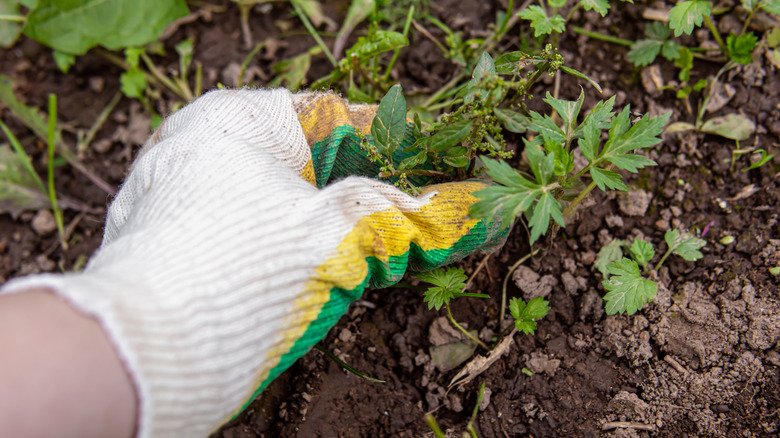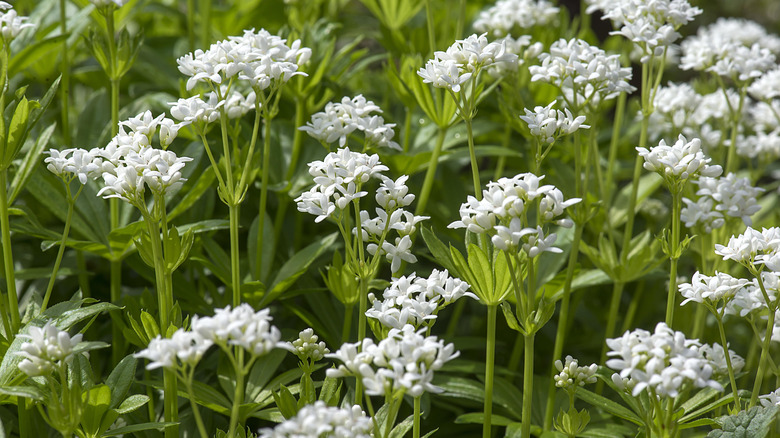Stop Weeds From Taking Over The Garden With The Sweetest Ground Cover
You crouch down for "just a quick tidy-up," and suddenly you're half an hour deep, hands stained with soil, and your garden basket is overflowing with weeds, again. Weeding is one of those endless chores that drains your time and energy, only for the same pesky intruders to pop right back up. But what if your garden could handle the weeding for you? That's exactly what sweet woodruff (Galium odoratum) does. It is one of the fastest growing ground covers and forms a thick, living carpet that makes life difficult for weeds.
Its lush mat of green foliage leaves little room for sunlight for weed seeds to sprout, creating a natural barrier that helps keep your garden tidy, without harsh chemicals or constant maintenance. In late spring, it produces delicate white star-shaped flowers and gives off a light, sweet scent, especially when the leaves are dried. Sweet woodruff grows about 6 to 12 inches tall and spreads gently but steadily through underground rhizomes.
It's typically not bothered by common garden pests and is not usually considered invasive, but it can spread pretty fast in the right conditions, especially if the soil is rich and stays consistently moist. Beyond weed control, sweet woodruff adds soft texture, spring flowers, and subtle fragrance to your garden. Its dried leaves have a gentle vanilla scent, which is why they've traditionally been used in potpourri and to lightly fragrance rooms or linens.
How to grow and care for sweet woodruff
Once it settles in, sweet woodruff almost takes care of itself. It loves shade and actually performs better in less sun. Too much direct sunlight can cause the leaves to fade or send the plant into summer dormancy. Sweet woodruff thrives in moist, well-drained soil. If your garden gets dry spells, give it a drink now and then, especially when the top layer feels dry. But in shady spots with naturally damp soil, it usually gets along just fine on its own. Plant small clumps about 12 inches apart, and you'll be surprised how quickly they fill in, forming a soft, weed-blocking carpet.
This fragrant shade-loving plant is hardy in USDA Hardiness Zones 4 to 9, and you can plant it beneath tall trees or shrubs, including walnut trees. It isn't affected by juglone, a chemical some trees (like walnuts) release into the soil, so it will still grow normally there. Just don't squeeze it in next to slow-growing or delicate flowering perennials, because sweet woodruff likes to spread. You can manage that by trimming the edges or manually pulling out the overgrowth.
If your sweet woodruff has been growing in one place for a couple of years, you can dig up a piece and move it somewhere else in the garden. Doing this in spring or fall works best because the weather is cooler. It helps keep the original patch from getting too crowded and also gives you more plants to fill other shady areas. Just make sure the section you take has some roots, then replant it in moist soil and water it so it can settle in.

